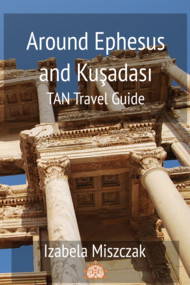Archaeological site:
Description:
This text is a fragment of a guidebook to Troy "The Secrets of Troy (TAN Travel Guide)".
The temple complex of the Western Sanctuary was built during the Archaic period of ancient Greece, but the sanctuary was also used later, during the Hellenistic and Roman times, with some modifications. The visible remains of buildings of the Sanctuary date back to the period of Troy VIII and IX. They were erected on the ruins of earlier buildings of Troy VI and VII, perhaps also serving some religious purposes. The best-preserved structure is an altar of the so-called Lower Sanctuary. There are also several wells, which were used for the collection of the blood of sacrificial animals and drawing water.
The first impression of the space within the Western Sanctuary is of a chaotic architecture of this sacred place. It results from frequent modifications and additions made over the centuries to the religious precinct, probably first constructed around 700 BCE. As time passed, the space became adorned with increasingly impressive buildings. There were three main altars, now called A, B, and C, used at the same time. It means that most probably there were several different deities worshipped within the sanctuary. Unfortunately, the names of these deities have not been discovered. However, there are some essential archaeological clues as to their identity, for instance, numerous terracotta statuettes of Demeter and Kybele.
Another significant clue that may indicate the identity of the goddess worshipped in the Western Sanctuary is provided by over 400 fragments of vessels decorated with painted birds, mainly swans. Swans are highly symbolic birds in many cultures because of their particular behaviour. They are migratory and thus are related to the changing seasons. Their eggs are frequently interpreted as symbols of fertility.
Moreover, swans are known to find a mate for life, and so they are also associated with love and marriage. Finally, just before they die, they produce a peculiar sound, known as the swan song. This fact became proverbial in ancient Greece, as the description of a final gesture, effort, or performance given just before death.
There is also a connection between the swans and the legend of the Trojan War. The link is provided by the history of the Spartan Queen Leda, the wife of Tyndareus. The king of gods, Zeus, admired and seduced her, in the guise of a swan escaping from an eagle. The same night Leda also lay with her husband, and later laid two eggs from which Helen, Clytemnestra, Castor, and Pollux were hatched.
While it is uncertain which of the children were mortal and which -- divine, it was always sure that Helen was the daughter of Zeus. Later, Helen would become the wife of King Menelaus of Sparta, from whom she was abducted by Prince Paris, in the sequence of events leading to the Trojan War. This story is the most probable explanation as to why the Trojans would use swan-decorated vessels in their religious rituals.
The exact identity of the deities worshipped in the Western Sanctuary is unknown, but the scholars are confident that at least some of them were female. Apart from the statuettes of Demeter and Kybele, also the swan-decorated vessels indicate the possible names of these goddesses. Swans are shown pulling the chariot of Aphrodite, and she is riding on them. This goddess of beauty was the winner of the Apple for the Fairest contest that initiated the series of incidents resulting in the Trojan War. Moreover, Artemis is also associated with wild animals, as is Kybele. It is even possible that all of them were worshipped at Troy, through rituals of sacrifice, consumption of small quantities of food and drink in specially produced ritual vessels, and with performances involving the skins of wild animals.
Visitor tips:
Leave the viewpoint next to the Palatial Residence of Troy VI and follow the sightseeing route to the south. After 20 meters, you will reach the point overlooking the Western Sanctuary. It is situated in the south-western part of the city while the Athena Sanctuary is on the opposite side of the mound, on the north-eastern side. The Western Sanctuary developed directly outside the walls of the Late Bronze Age citadel, on the site overlooking the Dardanelles.













